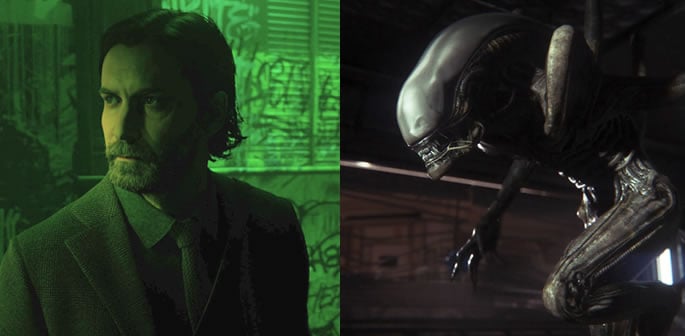The remake does justice to that legacy
As Halloween approaches, there’s no better time to dive into the chilling world of survival horror games.
The genre has long been a test of nerve and strategy, demanding players to balance fear, tension, and resourcefulness in equal measure.
From haunted towns to derelict spaceships, these games trap you in settings where every sound could spell danger and every shadow hides something waiting to strike.
Survival horror is not just about jump scares; it’s about atmosphere, pacing, and that constant feeling of vulnerability that keeps you on edge.
Whether you’re a genre veteran or looking for something terrifying to play this spooky season, these seven titles represent the very best of survival horror’s past, present, and future.
Resident Evil 2

When you think of survival horror, you think Resident Evil.
Among its many celebrated entries, the 2019 remake of Resident Evil 2 stands tallest.
The original 1998 version refined the formula established by the first game, introducing unforgettable horrors like the Licker and the relentless Mr X.
The remake does justice to that legacy, blending nostalgia with modern design in near-perfect fashion.
Players once again guide Leon and Claire through the doomed Raccoon City Police Department, navigating tight corridors, limited ammo, and the constant dread of being hunted.
Every bullet matters, every corner threatens danger, and the game’s atmosphere remains unmatched.
What makes Resident Evil 2 so enduring is its flawless execution of tension, the sense that survival is always just out of reach.
Few games have defined and redefined a genre like this one.
Whether you’re revisiting it or playing for the first time, Resident Evil 2 remains the gold standard for survival horror – immersive, terrifying, and brilliantly designed.
Silent Hill 2

Silent Hill 2 is a descent into psychological torment.
Its story of guilt, grief, and repression lingers long after the credits roll.
The 2001 original by Konami’s Team Silent remains a masterclass in emotional horror, and the 2024 remake by Bloober Team has faithfully preserved its suffocating atmosphere.
You play as James Sunderland, drawn to the fog-covered town of Silent Hill after receiving a letter from his deceased wife.
What follows is a slow, haunting journey through trauma and denial.
Monsters act as manifestations of the human psyche, and the result is one of the most disturbing yet thought-provoking experiences in gaming.
The remake enhances every visual and emotional detail while maintaining the oppressive tone that made the original unforgettable.
Silent Hill 2 is survival horror at its most introspective, not just surviving monsters, but confronting what they represent.
Alien: Isolation

Few games capture the claustrophobic dread of survival like Alien: Isolation.
Set aboard the decaying Sevastopol space station, it places you against a single, unkillable enemy – the Xenomorph.
Creative Assembly’s atmospheric recreation of Ridley Scott’s 1979 Alien is a triumph.
Instead of heavy weaponry, you rely on stealth, gadgets, and pure nerve.
The Xenomorph learns your movements, adapts to your tactics, and stalks you relentlessly. Every hiss in the vents, every flicker of the motion tracker, amplifies the fear.
By stripping away combat and focusing on evasion, Alien: Isolation redefines vulnerability.
It’s a nerve-shredding experience that proves true terror doesn’t need hordes of enemies, just one that knows you’re there. For fans of sci-fi horror, it’s essential Halloween gaming.
Amnesia: The Dark Descent

In 2010, Amnesia: The Dark Descent reignited a fading genre.
Frictional Games’ first-person nightmare thrusts you into the decaying halls of Castle Brennenburg with no memory, no weapons, and no way to fight back.
Your only tools are a lantern and your wits, both of which can fail you.
The game’s genius lies in its use of sanity as a mechanic. Hide in the dark too long and your mind begins to unravel, forcing you to choose between safety and sanity.
This constant balancing act keeps tension sky-high, turning simple exploration into psychological warfare.
Amnesia’s influence can be felt across the industry.
It inspired a wave of first-person horror, including Resident Evil 7’s perspective shift and countless indie titles.
Fifteen years later, The Dark Descent remains a landmark in survival horror design: raw, immersive, and unflinchingly terrifying.
Alan Wake 2

Remedy’s Alan Wake 2 is where survival horror meets surreal cinema.
It builds on the original’s themes of light and darkness, offering two interwoven narratives: one following writer Alan Wake, trapped in a twisted version of New York, and the other tracking FBI agent Saga Anderson as she investigates ritual murders in a Pacific Northwest town.
The result is an ambitious, layered experience where every puzzle, gunfight, and clue feeds into an overarching nightmare.
Alan Wake 2 captures the eerie unease of Silent Hill while adding its own cinematic flair, complete with musical interludes, television sequences, and meta storytelling.
By blending mystery, horror, and psychological dread, Alan Wake 2 proves that survival horror can evolve without losing its essence.
It’s a bold, haunting, and artistically rich experience that challenges both your mind and your courage.
Outlast

If you ever wanted to star in your own found-footage horror film, Outlast is your chance — though you may regret it.
Set in the deranged Mount Massive Asylum, you play a journalist armed with only a camcorder and your curiosity. What follows is a relentless chase through pitch-black hallways and blood-soaked wards.
The game’s most brilliant mechanic is its night vision camera, which turns visibility into a precious resource.
Every battery counts, and when they run out, panic sets in fast.
Without weapons, you must rely entirely on stealth and timing, often sprinting blindly as horrors close in behind you.
Outlast distilled the genre’s essence into pure terror. It’s short, sharp, and merciless, but that intensity is what makes it unforgettable. A decade later, it still sets the standard for first-person fear.
Resident Evil 7: Biohazard

After losing its way, Capcom brought Resident Evil back to its roots with Resident Evil 7: Biohazard.
Gone were the action-heavy theatrics of its predecessors. In their place came claustrophobic spaces, limited ammo, and genuine vulnerability.
Viewed through a first-person lens, Resident Evil 7 introduces Ethan Winters, a man trapped in the nightmare of the Baker family’s Louisiana plantation.
The shift in perspective redefined the franchise, evoking the dread of Amnesia while maintaining Resident Evil’s signature tension.
The return to survival horror fundamentals paid off.
Resident Evil 7 revived a franchise and the entire genre’s credibility in mainstream gaming. It reminded players that fear, when handled correctly, is an art form.
From fog-choked towns to space station corridors, survival horror games continue to evolve without losing their grip on what matters – fear, uncertainty, and the fight to survive.
Each of these titles pushes the genre in its own way, whether through cinematic storytelling, oppressive atmosphere, or pure, adrenaline-fuelled dread.
As Halloween draws closer, few experiences match the thrill of dimming the lights, turning up the volume, and stepping into one of these terrifying worlds.
Whether you’re exploring Raccoon City or hiding in the shadows of Sevastopol, the true spirit of survival horror lies in one timeless truth: you’re never really safe.






























































